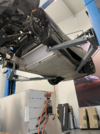Hello TMC,
I'm want to introduce a unique project from our workshop: a custom battery pack for the Tesla Roadster.
This journey started four years ago with an incomplete, damaged Roadster 2.5 in my workshop. It was missing an Energy Storage System (ESS), and after sitting 3 years in storage, it ignited an idea to create some truely fun, but also challenging project.
We embarked on building a battery without using any original Roadster parts. This wasn't just for the challenge or sport – it was a critical decision for safety and compatibility. Using cells with different chemistries means a corresponding, correctly calibrated Battery Management System (BMS) is essential. This ensured we avoided the risks of mismatching cell chemistry with the existing, incorrect Roadster BMS.
After meticulous wiring analysis, CAD design, welding, and assembly, we constructed a unique structure. We used Porsche Taycan Modules in a custom steel frame, only reusing the HVAC connector from a deep discharged Roadster pack.
Avoiding the typical Roadster ESS Design, we steered clear of using 18650 cells and the complex task of over 27,000 welding points. Our choice of OEM modules brings reliability and efficiency to this build.
The result, after fail-fast-debugging and a bit of repairing, is nothing short of exciting – a Roadster that's potentially the quickest on the planet, with a significant decrease in voltage drop under load, car weight of 1080 kg and weight destribution shifted a bit to the front. We're still exploring the limits of this setup.
We're nearing the completion of a new CAD design to simplify manufacturing and introduce water cooling for the Taycan Modules. This design will fit perfectly into the original battery box and also enable fastcharging.
With Tesla's recent release of CAN information, we're excited to delve deeper into diagnostics and further refine our approach.
As we continue, a big question remains: Should we stick with Taycan Modules, or explore other options? Your insights on this would be highly appreciated.
Added some pictures of the build progress and also of a testdrive (not the quickest one though, but the one with the best data. Car was loaded with tall 2 guys, ~ 170 kg and cells were 10 °C cold)
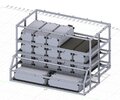
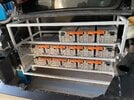
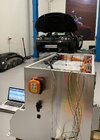
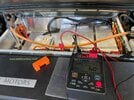
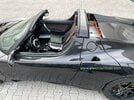
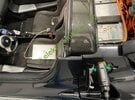
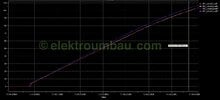
I'm want to introduce a unique project from our workshop: a custom battery pack for the Tesla Roadster.
This journey started four years ago with an incomplete, damaged Roadster 2.5 in my workshop. It was missing an Energy Storage System (ESS), and after sitting 3 years in storage, it ignited an idea to create some truely fun, but also challenging project.
We embarked on building a battery without using any original Roadster parts. This wasn't just for the challenge or sport – it was a critical decision for safety and compatibility. Using cells with different chemistries means a corresponding, correctly calibrated Battery Management System (BMS) is essential. This ensured we avoided the risks of mismatching cell chemistry with the existing, incorrect Roadster BMS.
After meticulous wiring analysis, CAD design, welding, and assembly, we constructed a unique structure. We used Porsche Taycan Modules in a custom steel frame, only reusing the HVAC connector from a deep discharged Roadster pack.
Avoiding the typical Roadster ESS Design, we steered clear of using 18650 cells and the complex task of over 27,000 welding points. Our choice of OEM modules brings reliability and efficiency to this build.
The result, after fail-fast-debugging and a bit of repairing, is nothing short of exciting – a Roadster that's potentially the quickest on the planet, with a significant decrease in voltage drop under load, car weight of 1080 kg and weight destribution shifted a bit to the front. We're still exploring the limits of this setup.
We're nearing the completion of a new CAD design to simplify manufacturing and introduce water cooling for the Taycan Modules. This design will fit perfectly into the original battery box and also enable fastcharging.
With Tesla's recent release of CAN information, we're excited to delve deeper into diagnostics and further refine our approach.
As we continue, a big question remains: Should we stick with Taycan Modules, or explore other options? Your insights on this would be highly appreciated.
Added some pictures of the build progress and also of a testdrive (not the quickest one though, but the one with the best data. Car was loaded with tall 2 guys, ~ 170 kg and cells were 10 °C cold)










